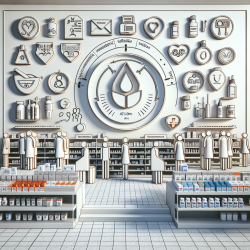Introduction
In the realm of healthcare, ensuring a robust safety culture is paramount to improving patient outcomes and reducing errors. The research article titled "Assessing Safety Culture in Pharmacies: The psychometric validation of the Safety Attitudes Questionnaire (SAQ) in a national sample of community pharmacies in Sweden" provides valuable insights into the safety culture within Swedish pharmacies. This blog post explores how practitioners can leverage these insights to enhance their skills and encourage further research in this critical area.
Understanding Safety Culture in Pharmacies
The study conducted in Sweden involved the translation and adaptation of the Safety Attitudes Questionnaire (SAQ) for use in community pharmacies. The SAQ is a well-established tool used to measure safety culture across various healthcare settings. By assessing factors such as Teamwork Climate, Job Satisfaction, Perceptions of Management, Safety Climate, and Working Conditions, the SAQ provides a comprehensive view of the safety culture within an organization.
Key Findings and Implications
The research revealed several critical findings:
- The SAQ demonstrated acceptable to good psychometric properties in the Swedish context, with coefficient alpha values ranging from .72 to .89.
- Perceptions of management showed the most variability across pharmacies, indicating potential areas for improvement.
- Teamwork Climate and Job Satisfaction scored relatively high, suggesting strong collaboration among pharmacy staff.
These findings underscore the importance of a supportive management structure and effective teamwork in fostering a positive safety culture. Practitioners can utilize these insights to identify areas for improvement within their own organizations, particularly in enhancing management practices and promoting teamwork.
Implementing Research Outcomes
Practitioners can take several steps to implement the outcomes of this research:
- Conduct Regular Assessments: Use tools like the SAQ to regularly assess the safety culture within your organization. This will help identify strengths and areas needing improvement.
- Enhance Management Practices: Focus on improving management practices by providing training and support to managers. Encourage open communication and feedback to create a supportive environment.
- Promote Teamwork: Foster a culture of collaboration by organizing team-building activities and encouraging cross-functional collaboration. Recognize and reward effective teamwork to reinforce positive behaviors.
Encouraging Further Research
The study highlights the need for further research to explore the relationship between safety culture and pharmacy outcomes. Practitioners are encouraged to engage in research initiatives that investigate the impact of safety culture on factors such as medication errors, customer satisfaction, and operational efficiency. Collaborating with academic institutions and participating in research networks can provide valuable insights and contribute to the broader body of knowledge in this field.
Conclusion
By implementing the insights from the Swedish study on safety culture in pharmacies, practitioners can enhance their skills and contribute to a safer healthcare environment. Regular assessments, improved management practices, and a focus on teamwork are key strategies for fostering a positive safety culture. Additionally, engaging in further research will help advance our understanding of the impact of safety culture on pharmacy outcomes.
To read the original research paper, please follow this link: Assessing Safety Culture in Pharmacies: The psychometric validation of the Safety Attitudes Questionnaire (SAQ) in a national sample of community pharmacies in Sweden.










